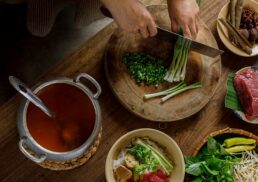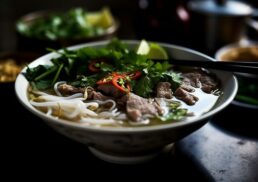Incorporating vegan protein into one’s diet is essential for maintaining optimal health, energy levels, and supporting muscle growth.
As an increasing number of individuals transition to plant-based lifestyles, it becomes increasingly important to understand the best sources of vegan protein.
This article examines the top ten vegan protein sources, ranging from legumes and beans to innovative options such as spirulina, all of which can be easily integrated into various meals.
Additionally, it provides delicious meal ideas and recipes to assist in the seamless incorporation of these nutritious ingredients into daily cooking practices.
Prepare to explore the benefits of plant-based protein.
Table of Contents
Key Takeaways:
- Incorporating vegan protein into your diet is important for overall health and well-being.
- Legumes, tofu, nuts, and quinoa are just a few of the top 10 vegan protein sources you should include in your diet.
- There are many delicious and easy ways to incorporate vegan protein into your meals, such as adding lentils to soups or using chickpeas to make hummus.
Why Vegan Protein is Important
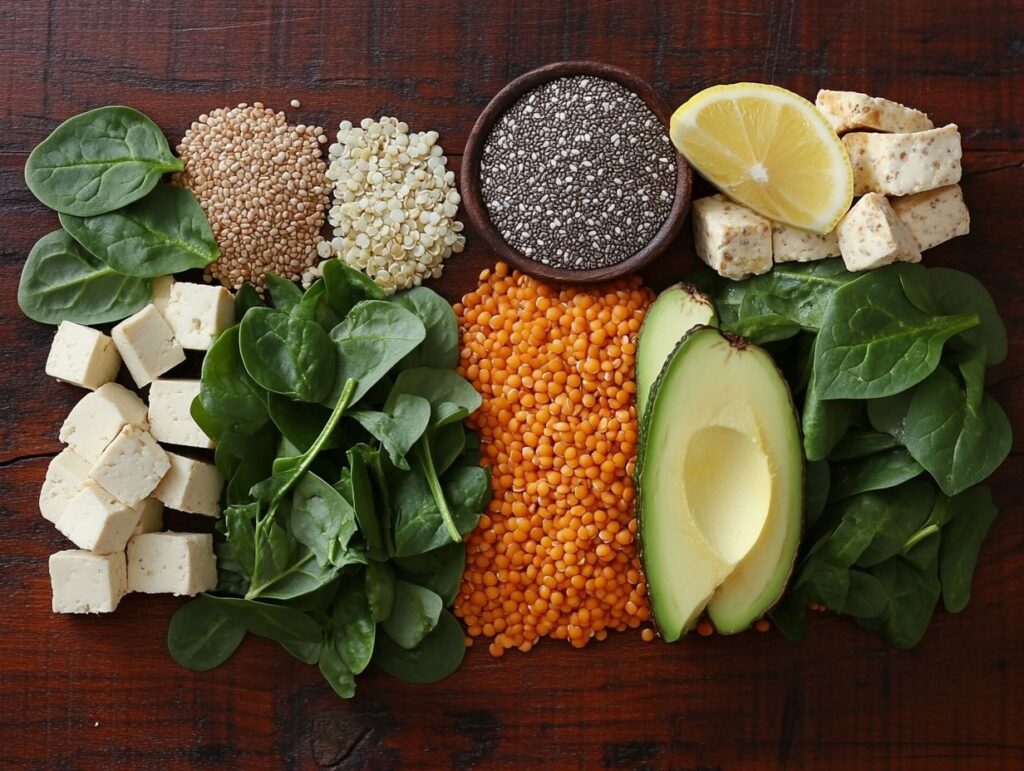
Vegan protein is a vital component of a balanced diet, particularly within plant-based nutrition, as it provides essential protein sources that meet the body’s protein requirements through rich alternatives such as legumes, nuts, and seeds.
Effectively integrating these sources enables individuals to adhere to dietary guidelines and fulfill protein needs, thereby promoting optimal health. For example, lentils and chickpeas are not only abundant in protein but also contain significant amounts of fiber, which is essential for digestive health and promoting satiety. To discover more about plant-based options, check out the Top 10 Vegan Protein Sources You Need in Your Diet.
Nuts such as almonds and walnuts contribute healthy fats alongside their protein content, thereby supporting cardiovascular health. Similarly, seeds like chia and hemp provide essential fatty acids and antioxidants, further enhancing overall wellness.
By incorporating a diverse array of these vegan options, individuals can reap numerous health benefits while ensuring a balanced intake of essential amino acids, vitamins, and minerals critical for maintaining energy and vitality.
Top 10 Vegan Protein Sources
When aiming to fulfill protein requirements within a vegan diet, it is essential to explore high-protein sources.
The following ten vegan protein sources, which include legumes, tofu, and nutritional yeast, not only offer substantial protein content but also supply a diverse array of essential amino acids and nutrients that can significantly enhance overall dietary fiber and nutrient intake.
1. Legumes and Beans
Legumes and beans are recognized as some of the richest sources of vegan protein and dietary fiber, making them essential components of a healthy diet. Prominent selections such as black beans, lentils, and chickpeas not only provide substantial protein content but also contribute positively to heart health due to their low fat content and high concentration of essential nutrients.
Plus these staples, varieties such as kidney beans and navy beans present unique flavors and textures, each offering distinct health benefits. Their high fiber content is particularly beneficial for digestion, promoting regularity and preventing constipation, which is crucial for overall well-being. For those looking to enhance their plant-based diet, consider exploring the Top 10 Vegan Protein Sources You Need in Your Diet.
Incorporating legumes into meals is a straightforward process; they can be included in salads, soups, and stews, or blended into creamy dips such as hummus. For more information on plant-based options, check out the Top 10 Vegan Protein Sources You Need in Your Diet.
For individuals seeking to innovate in the kitchen, a simple chickpea salad with olive oil, lemon juice, and fresh herbs serves as a refreshing side dish, while a robust lentil stew can provide a warm, comforting meal during colder days.
2. Tofu and Tempeh
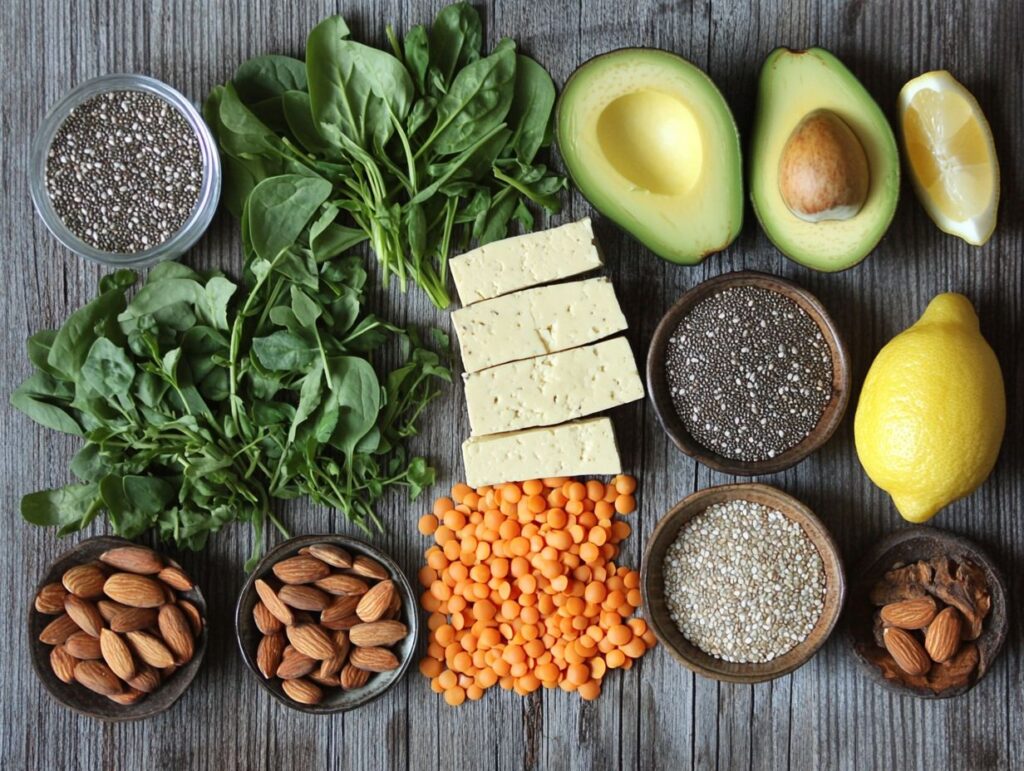
Tofu and tempeh are versatile soy products recognized as high-quality vegan protein sources, featuring a complete amino acid profile. Both tofu and tempeh provide significant protein content and healthy fats, making them excellent choices for meal planning, particularly for individuals following a vegan diet or those seeking alternatives to meat.
Tofu is produced from pressed soy milk and possesses a smooth, creamy texture that readily absorbs various flavors. In contrast, tempeh is a fermented product made from whole soybeans, resulting in a firmer texture and a slightly nutty flavor profile.
Incorporating these soy products into meals can be accomplished with ease; for instance, one can sauté cubes of tofu for stir-fries or marinate tempeh and grill it as a hearty addition to salads or sandwiches.
From a nutritional standpoint, tempeh is generally richer in fiber and beneficial probiotics due to the fermentation process, making it an outstanding choice for promoting gut health.
For those interested in exploring recipes, suggestions include:
- Lemon garlic tofu skewers
- Spicy tempeh taco filling
Both options are designed to satisfy the palate while supporting a balanced diet.
3. Nuts and Seeds
Nuts and seeds are not only excellent sources of healthy fats but also provide significant protein contributions within a vegan diet, thereby enhancing overall nutrient intake. Varieties such as pumpkin seeds and hemp seeds are particularly abundant in protein and magnesium, making them ideal components of a balanced meal plan.
Incorporating a diverse selection of nuts, including almonds, walnuts, and cashews, can elevate dietary fiber levels while ensuring the consumption of essential vitamins and minerals.
For example, almonds are rich in vitamin E, which is beneficial for heart health, while walnuts are an excellent source of omega-3 fatty acids that support cognitive function.
To enhance nutritional value in meals, these nutrient-dense options can be utilized as toppings for salads, blended into smoothies, or consumed as wholesome snacks between meals.
For those who enjoy culinary experimentation, preparing homemade nut and seed granola bars or energy balls presents an effective and enjoyable method for integrating these powerhouse foods into daily dietary routines.
4. Quinoa
Quinoa is a distinctive whole grain that distinguishes itself in the vegan protein realm due to its complete protein profile, containing all essential amino acids. As a gluten-free option, quinoa is particularly suitable for individuals adhering to a vegan diet and can be seamlessly integrated into a wide array of vegan recipes.
Plus its notable protein content, quinoa is also abundant in fiber, magnesium, and iron, making it a well-rounded component of any meal.
Regarding preparation, quinoa is highly versatile; it can be easily rinsed and then simmered in water or broth for approximately 15 minutes. This ancient grain serves as an excellent base for salads, enhances the texture of soups, or can even be included in breakfast bowls with fruits and nuts.
With its pleasant nutty flavor, quinoa pairs well with various ingredients, elevating both savory and sweet dishes. It establishes itself as a reliable carbohydrate source that effectively complements a balanced protein intake.
5. Edamame
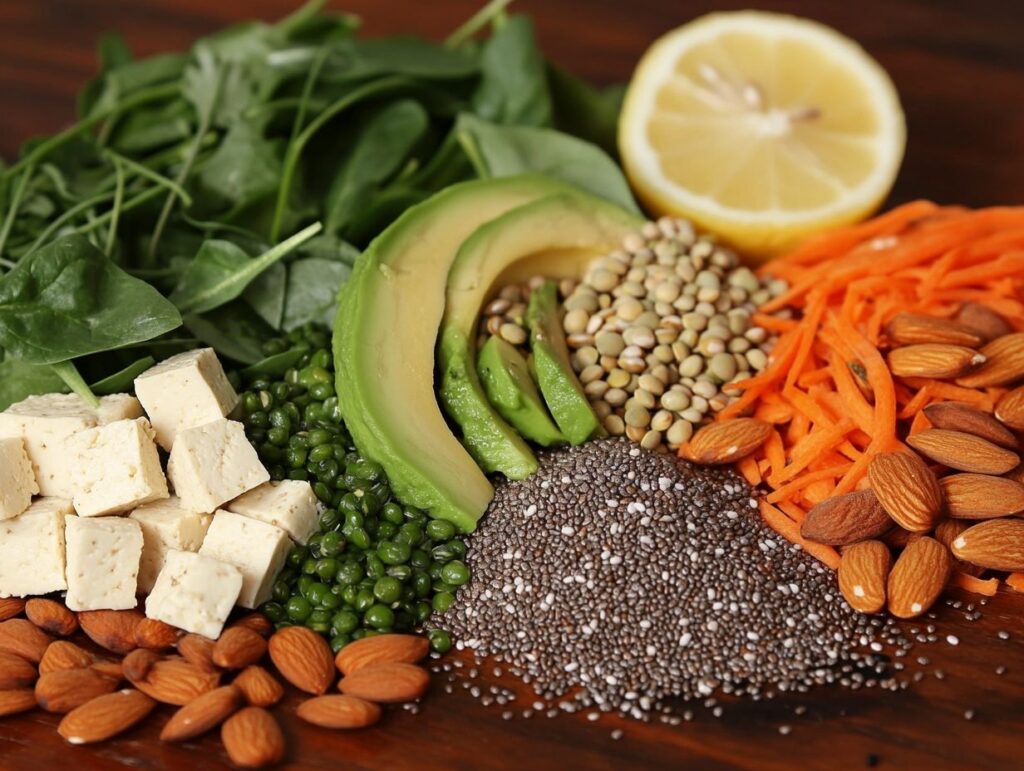
Edamame, which are young soybeans, represent an excellent source of high-quality soy protein, thereby serving as a vital component of any vegan protein-rich meal plan. Their appealing flavor and nutrient density render edamame an ideal choice for a snack or side dish within healthy eating practices.
Rich in essential amino acids, this versatile ingredient not only supports muscle health but also provides a comprehensive array of vitamins and minerals, including vitamin K, folate, and iron. The protein content found in edamame can contribute to satiety, making it an advantageous option for individuals seeking to maintain or lose weight.
To fully utilize their culinary potential, edamame can be easily steamed or boiled and enjoyed warm or incorporated into salads, stir-fries, or grain bowls to enhance texture and nutritional value.
Furthermore, a light sprinkling of sea salt or the addition of edamame to dips can elevate the overall dining experience.
6. Seitan
Seitan, a widely recognized meat alternative derived from wheat gluten, is an outstanding source of dietary protein and is frequently employed in vegan recipes to replicate the texture of meat. Due to its high protein content, seitan serves as a fulfilling addition to a diverse array of dishes, appealing to both vegans and omnivores.
This versatile ingredient is produced by washing wheat flour dough with water to eliminate the starch granules, resulting in a chewy, protein-rich substance. Seitan is abundant in essential amino acids, enhancing meals not only with its meaty consistency but also by providing beneficial nutrients such as iron and calcium.
Whether grilled into kebabs, sautéed in stir-fries, or used as a filling in tacos, seitan adapts seamlessly to various cuisines, demonstrating an impressive capacity to absorb flavors. Its ability to take on spices and marinades makes it a preferred choice for those seeking to elevate their plant-based dishes into hearty and satisfying meals.
7. Lentils
Lentils are an exceptional source of protein that also provides a substantial amount of dietary fiber, making them a fundamental component in many vegan diets. Their versatility allows for easy incorporation into a wide range of dishes, thereby enriching meals while promoting digestive health.
There are several types of lentils, each possessing distinct flavors and textures, including green, red, brown, and black varieties. For example, green lentils maintain their shape effectively, which makes them suitable for salads, whereas red lentils cook rapidly into a creamy purée, making them ideal for soups.
Notably, lentils contain approximately 18 grams of protein per cooked cup, serving as an excellent alternative to meat.
To enhance the appeal of lentils, one might consider sautéing them with onions, garlic, and spices, or exploring simple vegan recipes such as:
- lentil tacos
- a hearty lentil stew
These culinary techniques not only elevate their flavor but also facilitate the enjoyment of the numerous health benefits that lentils provide. For more information on nutritious options, check out the Top 10 Vegan Protein Sources You Need in Your Diet.
8. Chickpeas
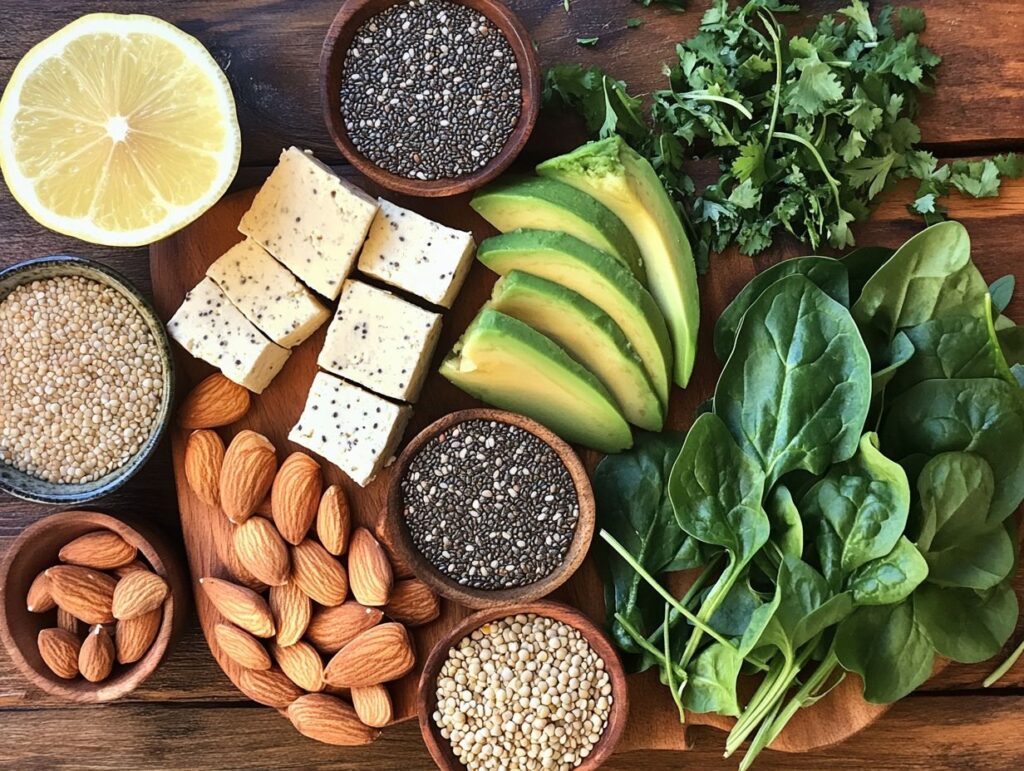
Chickpeas are a remarkable source of plant-based nutrients and serve as an excellent protein source for individuals following a vegan diet. They are rich in dietary fiber, which aids in digestion, and can be incorporated into a wide range of recipes, from salads to stews, thereby enhancing any meal plan with their versatility and nutritional value.
These legumes contain approximately 15 grams of protein per cooked cup and are also rich in essential vitamins and minerals, including iron and folate. Their creamy texture enables them to blend smoothly into hummus or smoothies, while whole chickpeas contribute a satisfying crunch to grain bowls and roasted vegetable dishes.
For those seeking to enhance daily meals, integrating chickpeas into soups, curries, or using them as a topping for pizzas provides an innovative way to enrich both flavor and nutrition. Whether boiled, roasted, or pureed, chickpeas can undoubtedly elevate any dish with their delightful taste and numerous health benefits.
9. Nutritional Yeast
Nutritional yeast is a distinctive vegan protein source recognized for its cheese-like flavor and high nutrient profile, including vitamin B12, which is often deficient in plant-based diets. This protein-rich food can be utilized as a flavorful enhancement in a variety of dishes, serving as a nutritious alternative to cheese.
Plus improving the taste of meals, nutritional yeast offers an impressive array of essential vitamins and minerals, thus contributing to a well-rounded diet. Incorporating this ingredient into daily cooking is straightforward; it can be added to soups, salads, and pasta dishes, or utilized to create a savory cheese sauce for mac and cheese.
For a quick snack, it pairs excellently with popcorn.
Enhancing a homemade pesto with nutritional yeast can significantly elevate its flavor while providing a valuable boost of nutrients. By exploring various recipe options, one can make this superfood an exciting and integral staple in any kitchen.
10. Spirulina
Spirulina is a nutrient-dense superfood known for its impressive protein content, making it an exceptional choice for individuals seeking plant-based protein sources. This blue-green algae is abundant in essential amino acids and can be easily integrated into various dietary options, including smoothies, snacks, and energy bars.
Plus its high protein content, spirulina serves as a rich source of vitamins, minerals, and antioxidants, providing numerous health benefits, such as enhancing the immune system and promoting gut health.
For individuals adhering to a vegan diet, incorporating spirulina can be accomplished effortlessly by adding a teaspoon to morning smoothies or blending it into nut butter for an enhanced nutritional profile. It can also be sprinkled onto salads, mixed into homemade energy bars, or whisked into salad dressings to increase nutritional content.
Exploring diverse recipes, such as spirulina-infused energy balls or vegan pancakes, can facilitate the seamless integration of this superfood into daily meals while maximizing its health benefits.
How to Incorporate Vegan Protein into Your Diet
Incorporating vegan protein into one’s diet is essential for meeting protein intake requirements while adhering to dietary guidelines for healthy eating.
With a variety of protein-rich foods available, careful meal planning with these sources can effectively ensure that daily nutrient needs are met.
Meal Ideas and Recipes
Exploring meal ideas and recipes presents an excellent opportunity to incorporate more vegan protein into one’s diet while embracing a plant-based lifestyle. By emphasizing protein-rich foods, individuals can prepare delicious and nutritious meals that align with their healthy eating objectives.
A wide array of options is available, including lentils, chickpeas, and quinoa. Each of these ingredients can serve as the foundation for various dishes, such as a hearty lentil soup enriched with vegetables, a vibrant quinoa salad enhanced with fresh herbs, or chickpea patties served in a whole grain wrap.
Incorporating nuts and seeds can provide additional texture, while tofu and tempeh can be transformed into flavorful stir-fries or curries. To enhance the appeal of these meals, it is advisable to experiment with a variety of spices and herbs, as well as to incorporate vibrant colors and textures, making the dishes not only flavorful but also visually appealing.


